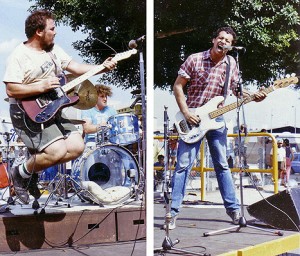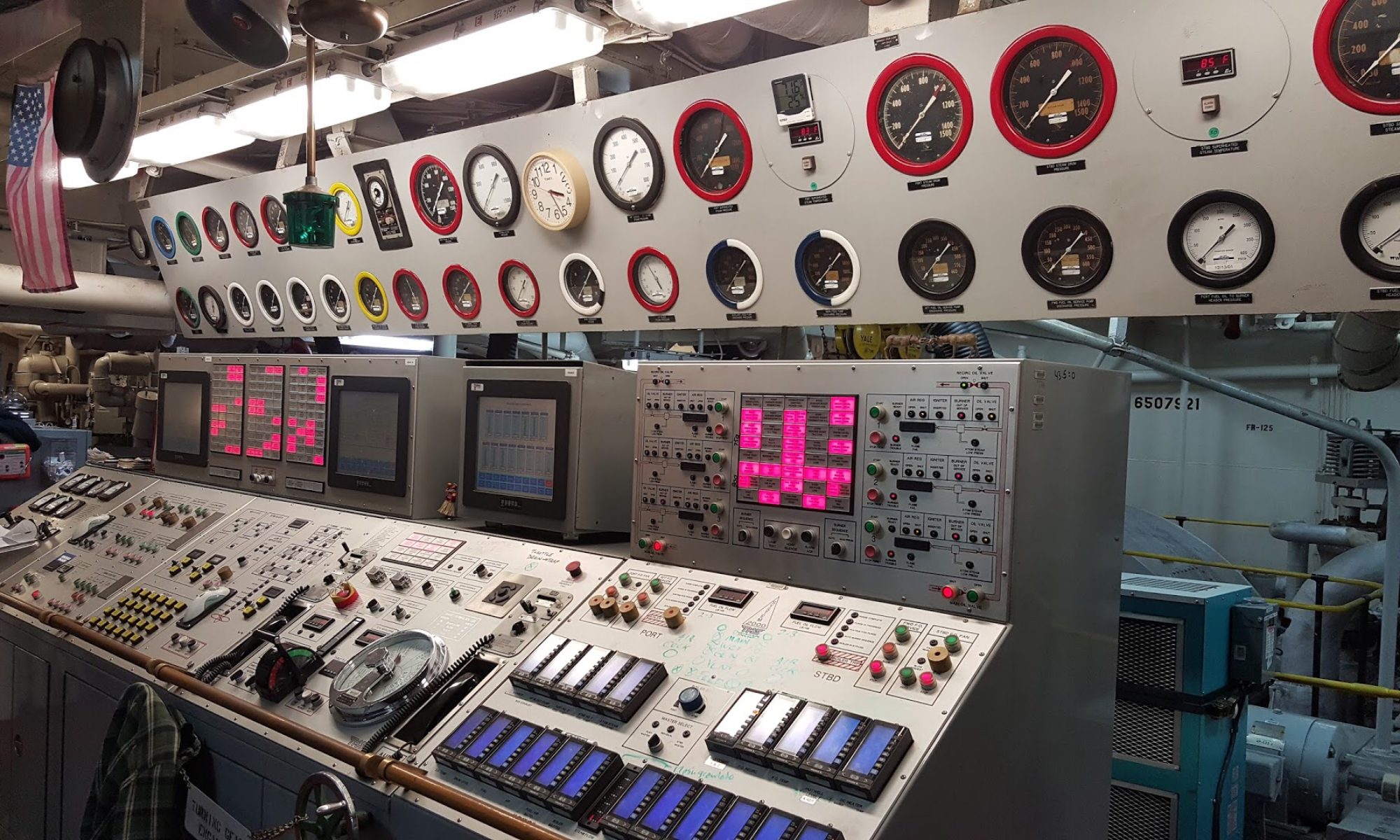This week Leapfrog Online held its first Hackathon. It was the culmination of several efforts in the organization around making innovation more tangible, and demonstrating the capabilities of unfettered time to build. We had 14 teams, with well over three-quarters of the company participating, and every single one of the teams’ projects was green-lighted. It was, in the words of our CEO, an “unqualified success.”
We tried something different, and it worked. And the things it produced will add meaningful amounts of business value for our teams, our company and our clients. You can read our blog post on the corporate site for that part. It’s meaningful, but there’s a deeper story.
 I’m a veteran of the dot-com era, which for me started in the mid-90s. I had a friend at CERN, and a friend at the National Center for Supercomputing Applications. I was in a PhD program at the University of Minnesota1 studying the political economy of technology. The friend at CERN would send both of us stuff about what Tim Berners-Lee was hacking on from time-to-time. Evenually, the friend at NCSA called me up in Minneapolis to try to get me to come back to Chicago to work for this company he was starting up. That friend was Alex Zoghlin and that company was Neoglyphics, the first real Web consulting firm in Chicago.2 I declined, but ended up coming back to Chicago anyway, when my proto-dissertation about how the Internet was going to radically change our socio-economic order was viewed with amused skepticism.
I’m a veteran of the dot-com era, which for me started in the mid-90s. I had a friend at CERN, and a friend at the National Center for Supercomputing Applications. I was in a PhD program at the University of Minnesota1 studying the political economy of technology. The friend at CERN would send both of us stuff about what Tim Berners-Lee was hacking on from time-to-time. Evenually, the friend at NCSA called me up in Minneapolis to try to get me to come back to Chicago to work for this company he was starting up. That friend was Alex Zoghlin and that company was Neoglyphics, the first real Web consulting firm in Chicago.2 I declined, but ended up coming back to Chicago anyway, when my proto-dissertation about how the Internet was going to radically change our socio-economic order was viewed with amused skepticism.
That was the summer of 1995. I started doing freelance Web consulting.3 and was shortly recruited by Playboy Enterprises to begin what would become Playboy Online. Alongside some early experiments from the New York Times, the Chicago Tribune and others, we built one of the earliest online magazines, and definitely one of the first major subscription revenue-model Web sites.
When I was at Playboy, we shared something…special. And it wasn’t about the content, or the brand, or the vibe provided by Hef.4 It was about the people. Most of us came from a variety of semi-related pre-Internet disciplines. Writers. Designers. Nerds. Musicians. Journalists. Theater people. There was only one real software engineer who had formal training. We were all the developer, all the sysadmin, all the UX person, and whatever else was required. We did our best, and it mostly worked.
And it was intriguing that it actually worked, because not only were there no clear guidelines about *how* to do something, but there were also no clear guidelines on even *what* you should do. Various generations of imported management made assertions. Various generations of salespeople from big and small software and consulting firms made more vague, PowerPoint-based assertions. But when it came down to cases, we just had to make it up. More precisely, we thought about it, tried something, and then iterated. There was less a sense of hierarchy, less a sense of rigidity, and more a spirit of adventure in the face of adversity and uncertainty. We made it up as we went along, and it was Good.5
This feeling will be familiar to anyone who has participated in a startup. In fact, every day is like this in a startup. It’s an adventure. There’s a lot of fear and anxiety. There’s a lot of exultation. There’s a lot of crushing loss. It’s not really for the faint-hearted, and if it’s not like that, then maybe you’re not doing it right, or it’s not doing it right for you.
In between the time I left Playboy and started at Leapfrog Online, I did two startups. One of these, Edventions, was started by someone who knew about executing on big ideas. Irv Shapiro’s idea was ahead of its time, an intranet/extranet system in a box, with hardware, software and networking for K-8 school. It was a fantastic idea, but the educational system was not ready for it yet. What made it great was that the Thing I experienced at Playboy was there. And it wasn’t just Irv himself, who was the first CEO I worked with that embodied the Thing, but a meaningful portion of the whole company. They believed in what we were doing, which hadn’t been done before, and it was Good.
I went elsewhere after Edventions was sold, and the Thing was totally gone. Not even part of the scene. I learned to sell, inside and outside. And then I did another start-up. This one was mine. And the horrible part was this: I didn’t create the Thing. I was so worried about the product, the next client, and not going broke that I didn’t even consider it. Terrible.
But when I sold the intellectual property from that startup to Leapfrog Online, the fact that I had been missing the Thing—not even *considering* it as important—came back in an instant. Smart people trying to do something that hadn’t been done before. And real value was being created.
Where was the Thing?
When I arrived at Leapfrog, I began pining for it. The Thing would show up in fits and starts, sometimes in big ways, sometimes in small ways, but it’s much harder to maintain that feeling—which certainly existed during LFO’s startup phase—when you get to medium size. Mid-size companies have unique leadership, strategy and talent challenges, and they’re all about scale and growth.6 Rapid change, but the kind of change that cannot be as nimble as that of a start-up, because the company has different things to prove to its founders and investors and clients. The pressures are different and the solutions to them are about maintaining focus while building out more specialized functions. Not the most conducive to that elusive startup Thing, or so I thought.
Until this week.
I have been trying to recapture that feeling, what it was like at Playboy back in the day, for a long, long time. And during the Hackathon, I felt it. It was glorious. But that was not the best part. The best part was at the *end* of the Hackathon, when I had a chance to sit down and talk with the people I had stayed up all night with, and who really, really got a lot out of it. I realized that THEY felt a Thing—not my Playboy thing—but their *own* version of that class of thing that they could look back on and say “I felt that and I *did* that.” I realized I wasn’t really trying re-create that feeling for myself. What I *was* trying to do was to create it for THEM. And that is really what I’ve been striving for all this time.
So. Pretty please, with sugar on top. Do a Hackathon at your company. Even if you’re not a startup.
- Home of Gopher. [↩]
- Started with his dad, Gil Zoghlin, whose then-ultra bleeding edge color laser printer we utilized for various nefarious purposes back in high school. [↩]
- You had to know sysadmin stuff. You had to know Perl, which was really the only viable language other than C to do stuff in, and you had to have some knowledge of visual design. But most importantly, you had to explain the crazy notion that the “World Wide Web” was critical to the future viability of a mid-size insurance company. Not easy. [↩]
- Though producing several live pay-per-view Webcasts from the Playboy mansion certainly delivered its share of amusing anecdotes. [↩]
- That it actually worked, to the benefit of the parent company, seemed almost but not quite secondary. [↩]
- A point worthy of explanation here, since the challenges of mid-size companies, relative to startups and big corporations, do not get discussed as much in the Internet world. [↩]
